‘White flight is one thing, white return is something else.’
Hal Miller died in December. Hal was a criminal lawyer and my father’s good friend since adolescence, but I didn’t really sit down and talk to him until the mid-‘90s when I was writing a story for the Los Angeles Times about a close-knit generation of black men born before 1940 who called themselves the Eastside Boys. My dad was a member, as was Hal, but Hal was the doyen of the Boys, its unofficial historian and torchbearer. For years he hosted an annual Eastside Boys reunion at his house that wasn’t just a party, it was a paean to black life in L.A. in the first part of the 20th century that in retrospect turned out to be its golden years.
To understand the significance of the gentrification overtaking black neighborhoods in metropolitan Los Angeles, it’s important to understand how much the Eastside meant to black people until relatively recently. This is not to say things were perfect; racist custom in Los Angeles dictated that black people live in separate neighborhoods, chiefly an area east of Main Street and west of Alameda Street, aka “the Eastside,” that is now simply called South Central. But what Hal and the Boys celebrated — not just at parties, but in their daily lives — was the enormous possibility that Los Angeles seemed to offer, which was visible even from the restricted view of their neighborhood.
Here was a big city like no other, one with a modern, diverse economy, affordable houses and maybe most importantly, horizontal-ness. Unlike Old-South New Orleans or gritty New York, L.A.’s center-less topography and still-unfolding history encouraged a sense of access for all, a feeling that you could at some point write yourself and your ambitions into this history. The belief was helped along by the weather, a luxury afforded to everyone of any color who had come from places with suffocating humidity or freezing cold or both. For black people very accustomed to living in inhospitable and hostile climates of all kinds, moving west was a no- brainer, and the Eastside community’s relative success in mid-20th century L.A. fueled hope for a truly good life that appeared to be taking shape for generations to come, segregation notwithstanding.
That good life did happen, in a fashion, riding the arc of the civil rights movements of the ‘50s and ‘60s. But success came at a cost. As the old racial housing restrictions fell, white people fled, and black people found themselves living in a new iteration of the segregation they thought they’d left behind. Still, the good life continued to grow in the solid middle-class confines of Crenshaw, Leimert Park, View Park, Baldwin Hills — all insular bedroom communities that had once been strictly off-limits to blacks.
Inglewood was the last place whites fled en masse and blacks filled in. Inglewood was different. It was a city at the tip of the South Bay, very far west in Eastside terms, and, like all cities in the South Bay, historically opposed to integration. Despite that, or maybe because of it, white residents remained in considerable numbers there well into the ‘70s. The new black residents, for their part, did not enjoy the fruits of any good life for long. The early 1980s brought the devastating effects of Proposition 13, which capped funding for public schools and other services; later came a crack cocaine epidemic overseen at the street level by burgeoning gangs; and the racial makeup of Inglewood and South Central started to be reshaped by waves of immigrants coming from war-torn Central America and Mexico.
If all that had black L.A. teetering, the destabilizing force of the 21st century — the cost of housing — threatens to knock it out for good. The affordability that allowed the Eastside to happen is gone. The L.A. that once was so horizontal has become steeply vertical, with housing prices too high for all but the most affluent and resourceful. And since race has become so intertwined with class, it’s a given that anything expensive will be off-limits to black people as a group. L.A.’s fabled good life is less accessible and less black, an inversion of the trend Hal and the Eastside generation started. The growth they saw as nothing less than social justice, the history they hoped to write, has shut down on several fronts, or at the very least stalled. Neighborhood by neighborhood, block by block, blacks are being written out.

White Return
The crisis has been a long time coming.
One of the biggest factors contributing to the decline of South Los Angeles is a deadly combination of declining wages and rising housing prices, according to a 2018 study by the UCLA Luskin School of Public Affairs. Adjusting for inflation, home prices are now triple what they were in 1960. The lack of affordability, a consequence of the lack of jobs, is the oxygen feeding the gentrification consuming Crenshaw and which is now beginning to consume Inglewood. A 2019 analysis of housing trends by PropertyShark found that Inglewood is the fastest-growing market in the L.A. area, with home prices surging 63%between 2014 to 2018. Without a hint of irony, the analysis also noted that Inglewood is attractive because its inventory of two-bedroom, two-bath starter homes has a “suburban feel.”
When Hal and my father were coming of age in an emerging Los Angeles, gentrification was a phenomenon no one could quite imagine. White flight is one thing, white return is something else. Of course, that dynamic has been remaking historically black neighborhoods for years — Harlem, Bed-Stuy — but this is the first time it’s happening here on such a large scale. And it means something different here because L.A.’s black population, which has dwindled to less than 10% of the overall population, is under real existential threat.
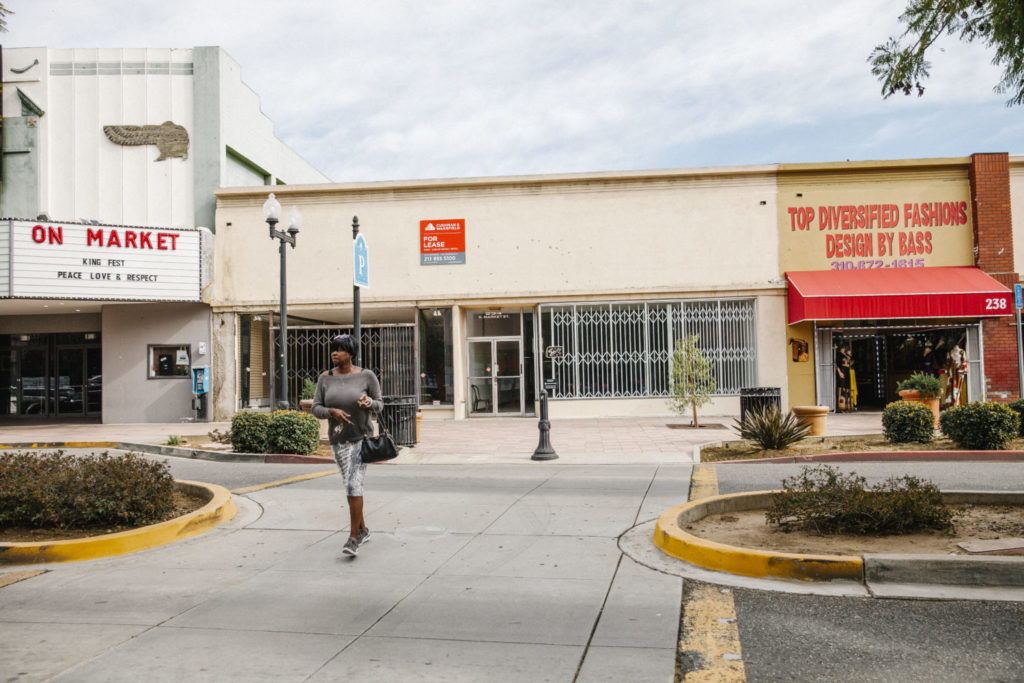
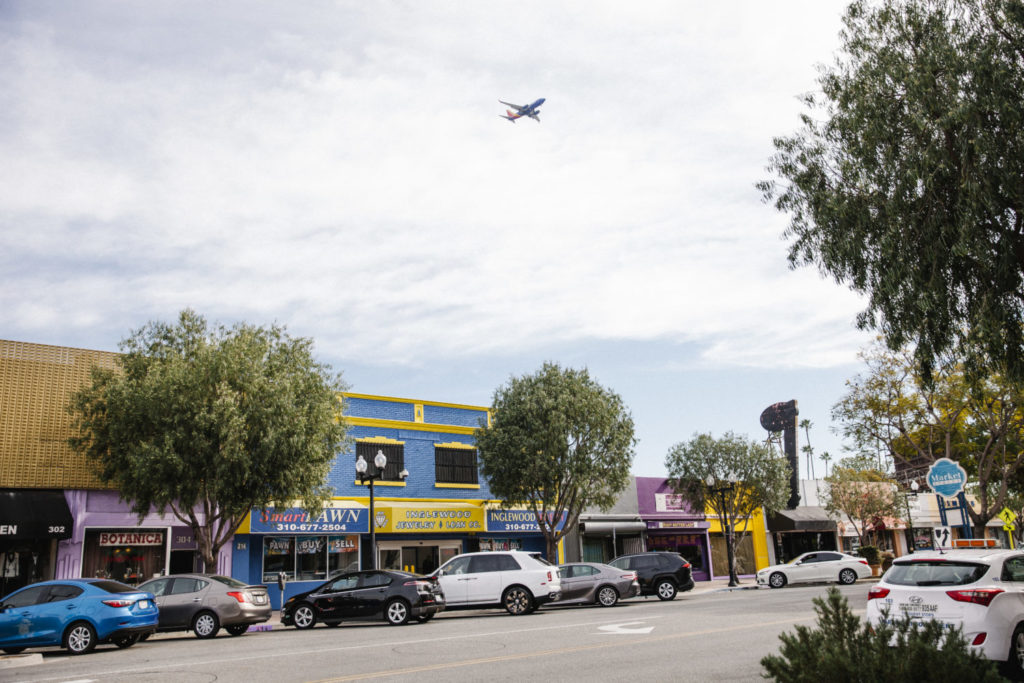
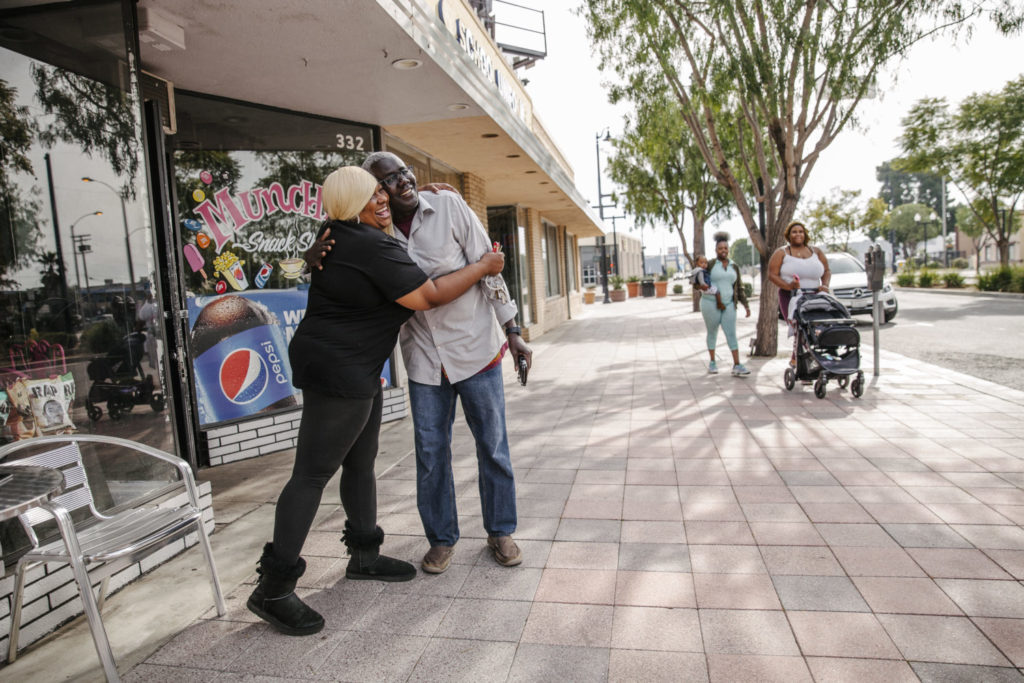
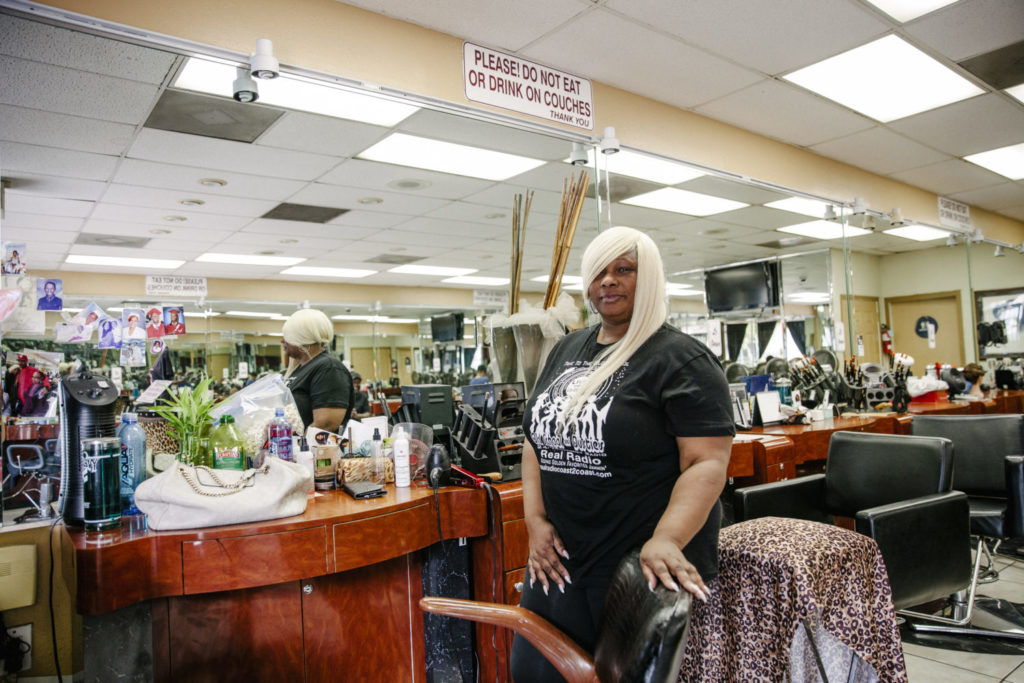
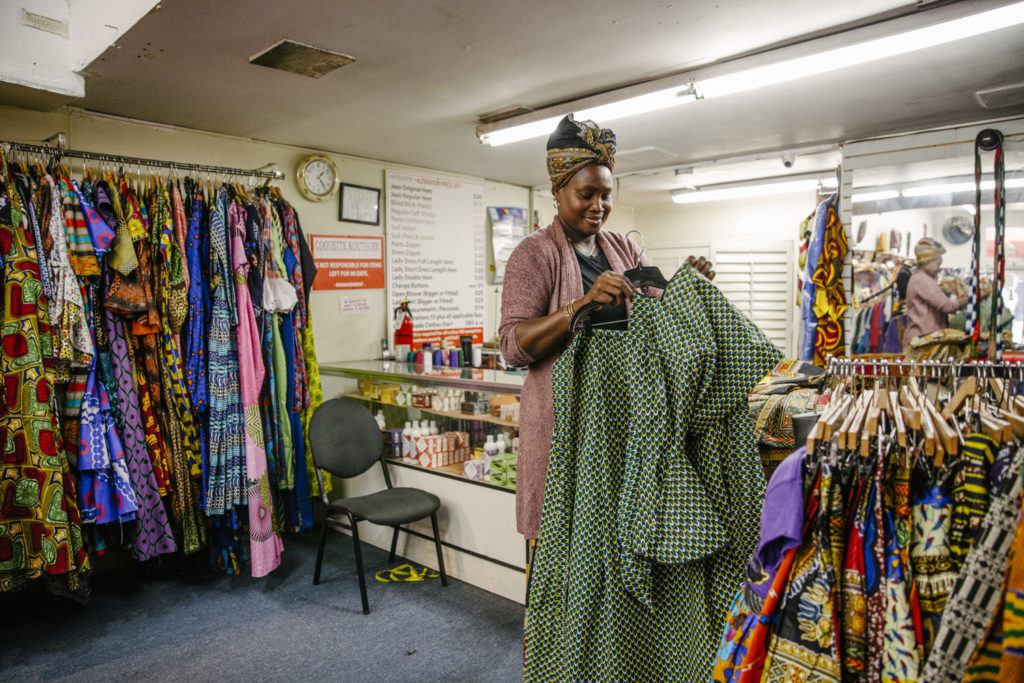
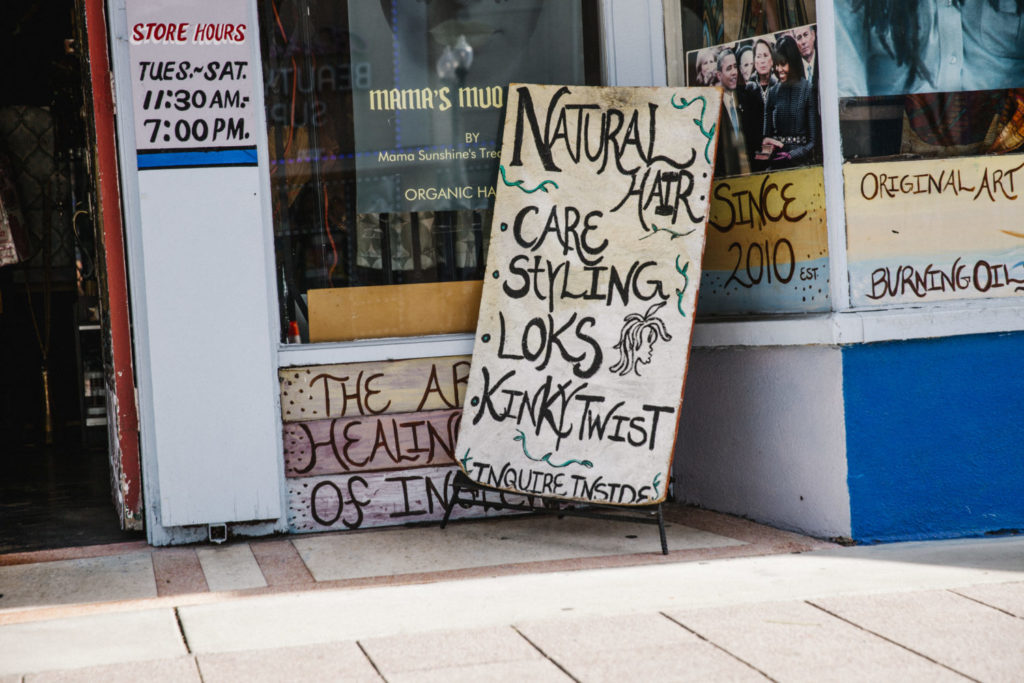
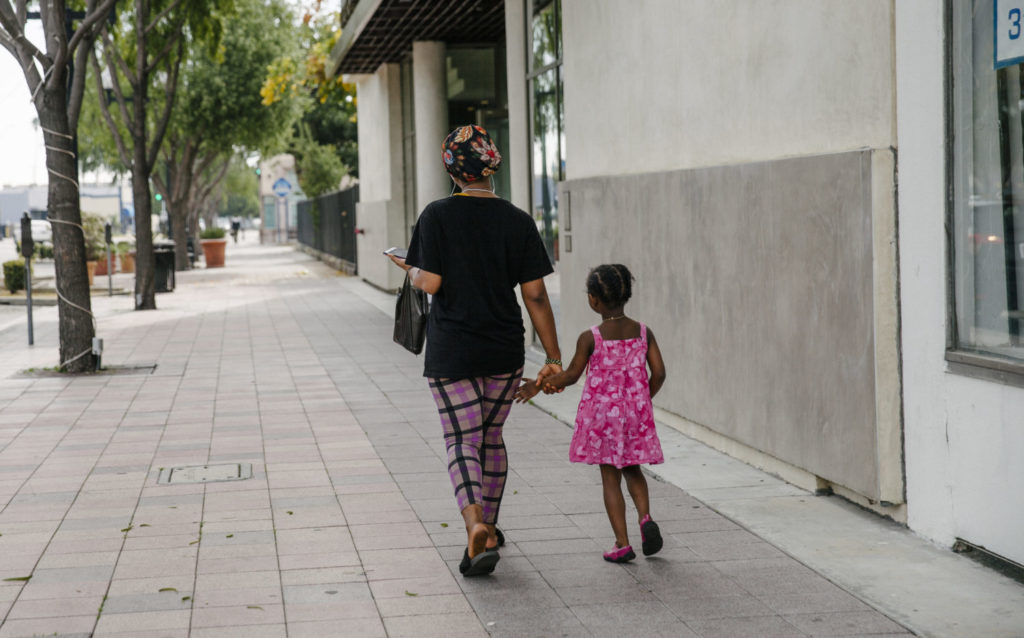
The ‘New’ Inglewood
That threat is more dramatic in Inglewood, where I lived as an adolescent and where I live now. Inglewood isn’t a black neighborhood in Los Angeles under siege; it’s a separate city. Its population is 50% black. The narratives of gentrification, the forces of racial and economic change, loom larger in a self-contained place with its own government, school district, local culture and public image.
Some people — including some of my neighbors — say our image has long been tarnished and in need of revitalization, and that gentrification, for all its downsides and uncertainties, is the answer. And the timing is ripe for renewal. The city is the site of the high-profile construction of an NFL stadium that will house the Rams and the Chargers, a billion-dollar-plus project surrounded by some 50 acres of condos, retail and other urban amenities on the grounds of what had once been the Hollywood Park Racetrack. The whole development is like a creature rising from a dead sea in the middle of town, something that promises to finally redeem underachieving Inglewood. The visuals have been irresistible to the media and to everyone outside the city. The mayor of Inglewood, James Butts — who is black— has been exultant. “There is no city in the country that has transitioned from a brand of unemployment, poverty, high crime to where Inglewood has transitioned in just four years,” he told NPR last year.
In other words, there is no template for what is happening here.
If what’s happening here seems novel, the outcome feels predictable. Patterns of gentrification everywhere argue against Inglewood’s black and Latino population being around to enjoy the new and improved (i.e., whiter) city. The history my father’s generation was trying to write, of black people flourishing despite racial pressures, could be completely erased unless something is done.
Unlike Old-South New Orleans or gritty New York, L.A.’s center-less topography and still-unfolding history encouraged a sense of access for all, a feeling that you could at some point write yourself and your ambitions into this history.
The good news is that something is being done. Damien Goodmon is the founder of the Crenshaw Subway Coalition, a transportation justice organization that has fought, with notable success, to make the new MTA rail line under construction in Crenshaw and Inglewood accountable to the community’s wants. Lately, the coalition has been organizing against gentrification in both places, working closely with grassroots groups in Inglewood. To Goodmon, Inglewood is a critical front in what he sees as a larger war that’s as racial and cultural as it is economic.
“We have to hold the line,” says Goodmon, whose family’s roots and civic prominence in L.A. date back to the 1920s. “What you have is a literal whitewashing where people have monetized black culture. It’s marketable to incoming whites to live in black cultural enclaves. Then, they come in and push out the people that made the culture.”
To counter what Goodmon sees as rapacious “racialized capitalism,” the coalition is trying to form a nonprofit community land trust. “We’ve got to, because [black people] will always lose out development-wise,” he says. “We’ve got to think big. How do we not lose it all? That’s the question now.”
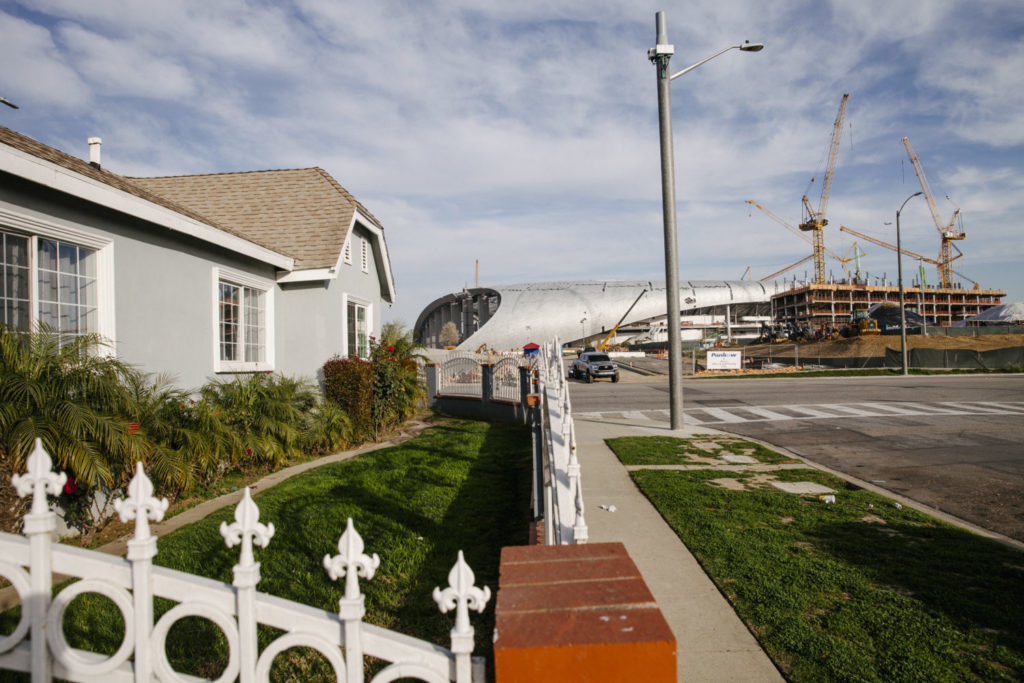
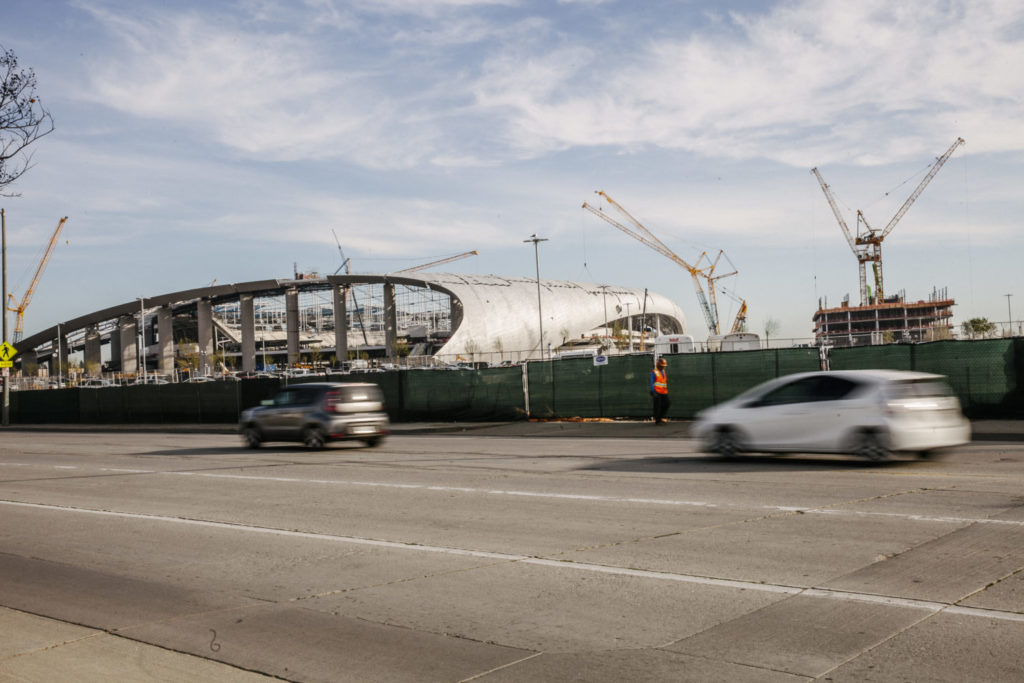
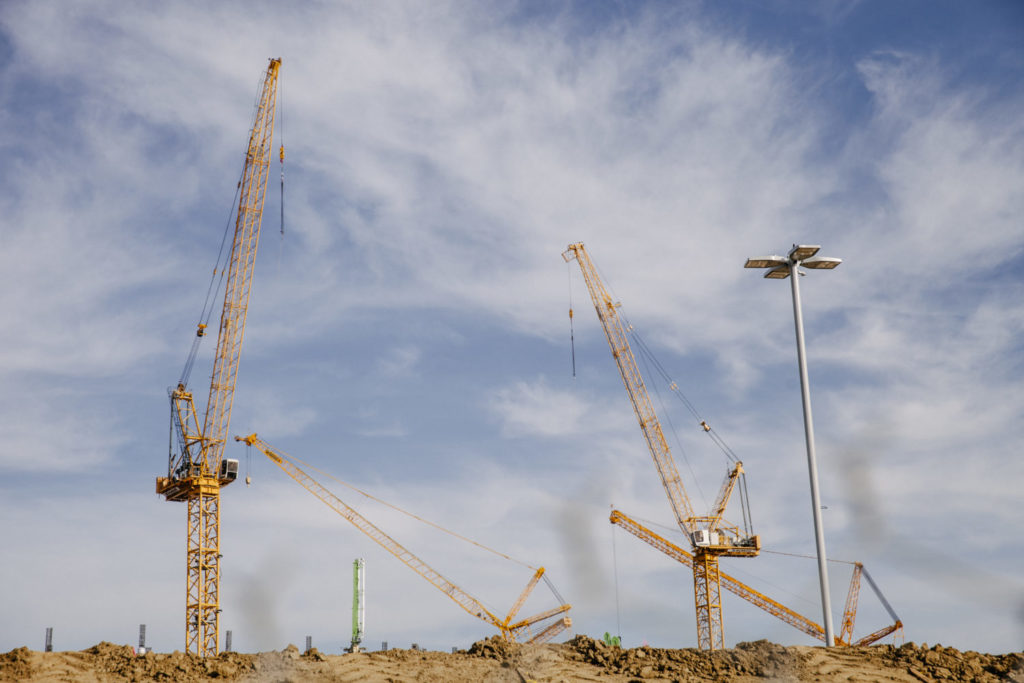
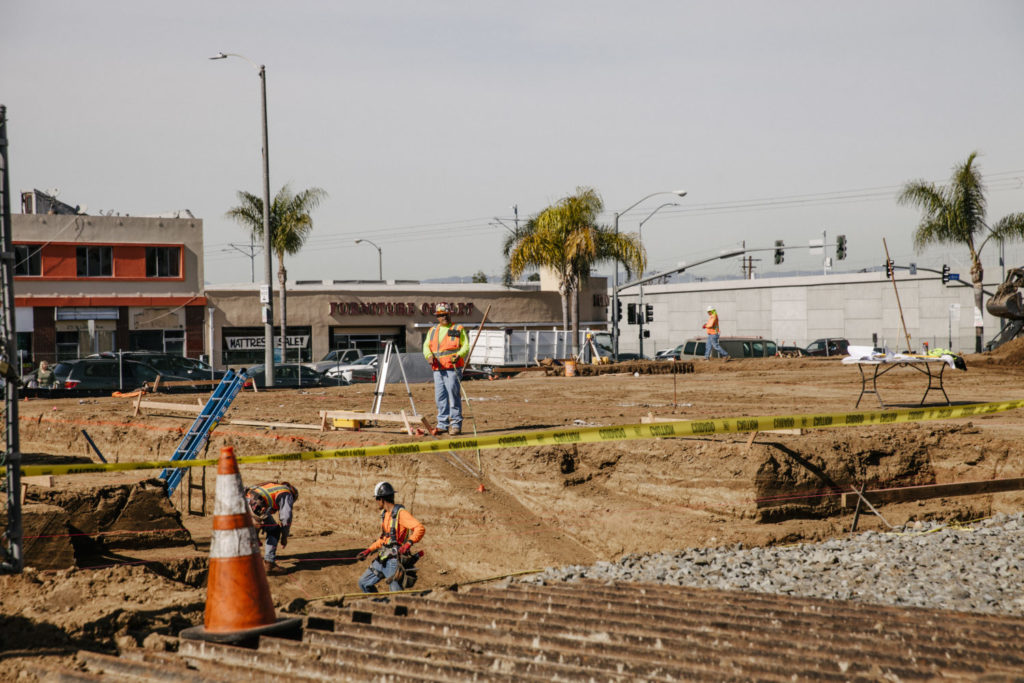
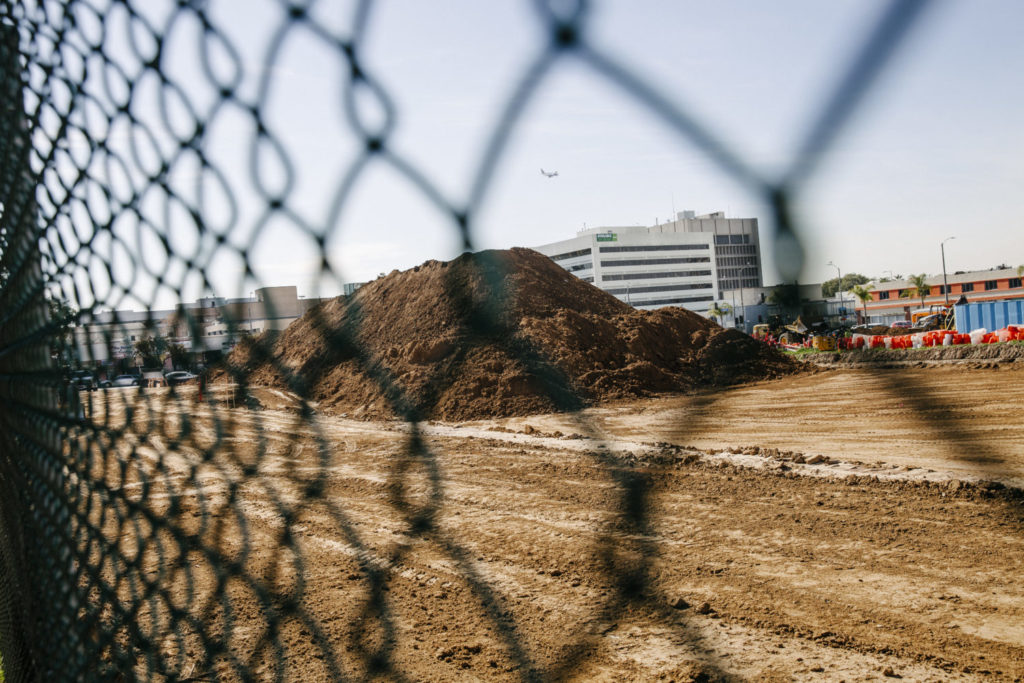
More Obstacles Ahead
Michael Anderson, an architect and developer who worked to reimagine and rebuild black neighborhoods after the nadir of the 1992 unrest, says black neighborhoods in some ways missed the boat. Rather than aggressively cultivating private development dollars that could have upgraded standards of living — including, among other things, more real jobs — politicians and leaders instead relied on government funding that has proven unreliable, to say the least. Anderson is an advocate of racial justice who isn’t opposed to government funding — he’s cultivated it for lots of projects himself — but he frequently sees it as a metaphor for embattled black neighborhoods that have grown used to aiming low, for surviving rather than thriving.
What he thinks is really missing is the idealistic, forward-thinking energy of the Eastside, which ran on a local economy of largely black business owners catering to black folks. Of course, that economy was a product of segregation, but the point is that the community-first vision of that old economy still applies. Anderson says that in the ‘90s, when that vision was critically needed, “We didn’t aim high enough.” It’s painful for him to say, but objectively speaking, gentrification has been the only path so far to the higher quality of life in black communities that he had hoped would have taken root 25 years ago.
Which is another way of saying that all of the things black people have been wanting for decades, since their arrival here — decent retail options, good schools, safe streets — don’t seem feasible without a white presence. It’s a longstanding paradox that may yet change, but it’s one of many obstacles to achieving the good life that has only grown more complicated over the years. It almost makes me long for the Eastside days when racism was a simpler obstacle, something that was clearly defined and clearly responded to.
Back in the early ‘50s, after racial housing covenants were outlawed, my uncle bought a house in a neighborhood just south of Slauson Avenue. Slauson was long the dividing line between black and white, the southern boundary of the Eastside. For his audacity my uncle got a cross burned on his lawn. But he got there; he made his stand. In buying a house in the place he wanted to live — small, but bright, with a backyard and a lawn — he’d bought a piece of the L.A. dream.
The troubling thing about gentrification is that it involves not black people’s arrival, but their exit. And, as Goodmon points out, there are no L.A. neighborhoods left to go to. There are no more arrivals.
L.A. was once a city full of thriving middle-class neighborhoods. In a month-long series Los Angeleno explores what we lose when an Affordable L.A. is just a dream. Join the conversation on social media with the hashtag #AffordableLA.
L.A’s Endangered Middle Class: An Examination by Los Angeleno staff
Not Homeless Yet: L.A.’s Invisible Class by Sam Slovick
What We Talk About When We Talk About the Middle Class by Michelle Chihara
Gentrifying Highland Park’s War on the Middle Class by Andrew Gumbel

